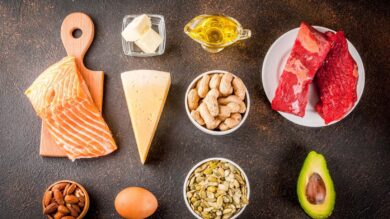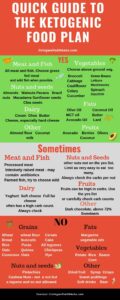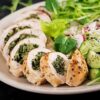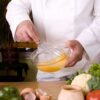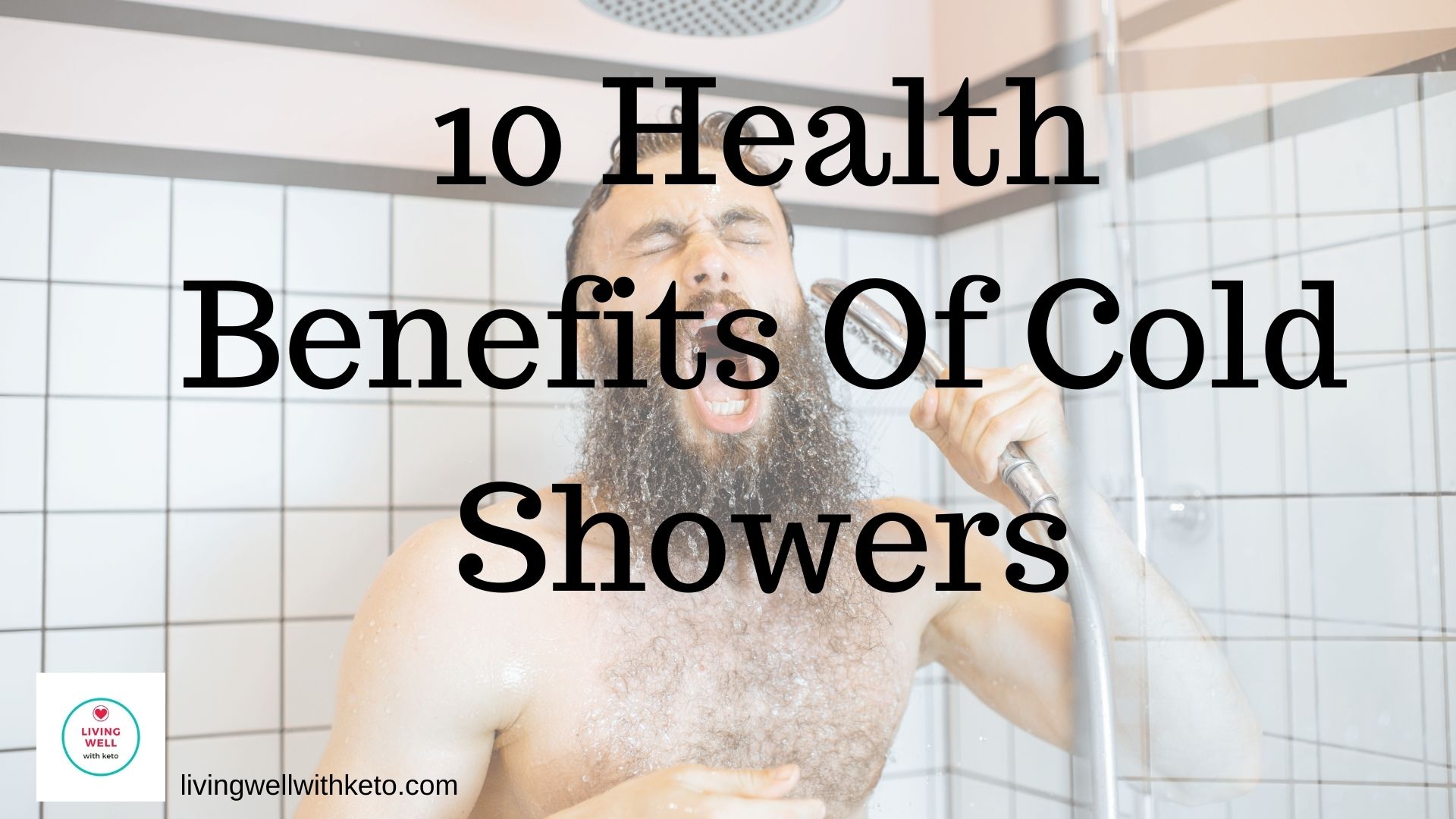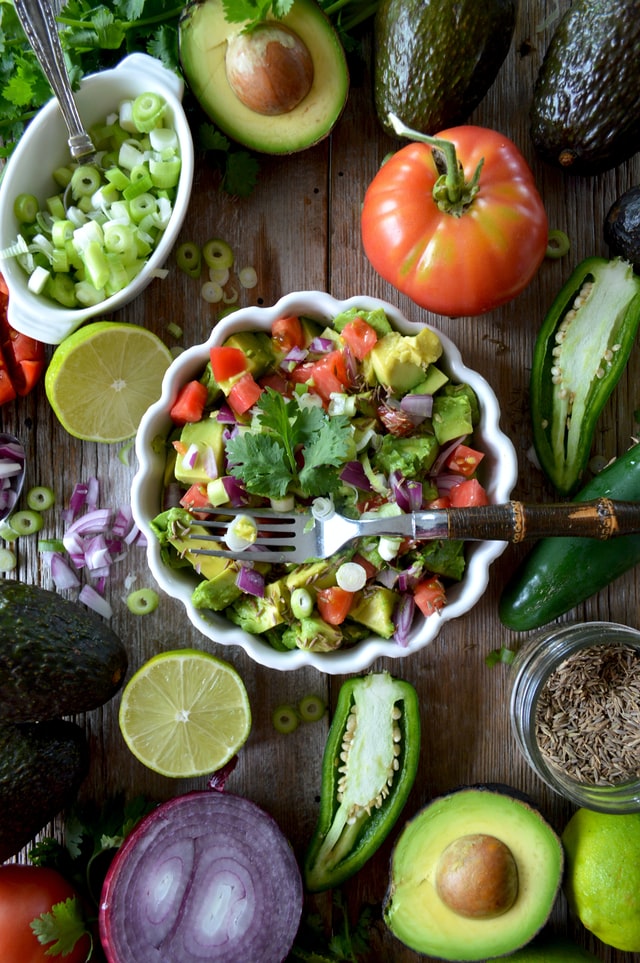What is a keto diet?
The keto diet plan is a low carbohydrate, medium protein and high fat diet.
These three food groups are known as your macros, and are important if you want to achieve ketosis.
In general, you should be aiming for macros of 5% carbohydrate, 20% protein and 75% fat.
With these macros almost everyone should be able to get into ketosis within a few days, although it can take as long as a week.
To find out exactly how many grams of each macro you should be eating each day use this keto calculator
The keto calculator will take account of your gender, age, weight, height and activity level and give you your individual suggested macros.
It all depends on your goals, and how quickly you’d like to reach them.
If weight loss or being healthier is your goal then below 20g per day of carbs will be the quickest way to get into ketosis and turn yourself into a fat burning machine along with all the health benefits.
This does vary somewhat from person to person, and as you become more familiar with the diet you will be able to adjust your macros and find the amount that works best for you.
So, what can you eat on the keto diet?
Your keto diet food list includes all meat, all fish, cream (but not milk), butter, cheese, eggs, nuts, healthy oils such as olive oil, coconut oil and MCT oil, above ground vegetables and avocados and should form the basis of your diet.
These foods all fit the criteria of being low carb, and by eating a mix of these foods each day you should be able to reach both your protein and fat requirements too.
As a rule of thumb, You should eat until you feel full, there is no need to count calories although some people like to do this to track exactly how many grams of carbs, protein and fat they should be eating each day.
Aim for less than 20g carbs, approximately 0.8g of protein per 1 pound of body weight, and as much fat as you need to feel you’ve had enough to eat, without over eating or going hungry.
Remember to track your weight loss if this is one of your goals. It’s surprisingly easy to eat too few calories and lose weight too quickly. This is often caused by not eating enough fats, and being in ketosis does reduce your appetite.
As most of your calories should be coming from fats you should know the different types of fats, and which are best for your health.
Fats in meat and fatty fish are natural, and good for you as are both saturated and monounsaturated fats. Foods which contain these types of fats are:
- butter ( one tbsp: 11g fat, 0g carbs, 0g protein )
- coconut oil ( one tsp: 4.5g fat, 0g carbs, 0g protein )
- olive oil ( one tbsp: 14g fat, 0g carbs, 0g protein)
- avocado oil ( one tbsp: 14g fat, 0g carbs, 0g protein )
- MCT oil ( one tbsp: 14g fat, 0g carbs, 0g protein)
- cheese – especially hard cheese with its lower carb count ( 28g/ 1oz: cheddar 9g fat, 0g carbs, 7g protein. )
- nuts – macadamia nuts, Brazil nuts and almonds are all low carb – ( 28g/1oz : almonds 14g fat, 6.1 carbs, 6 protein Brazil 18.8 fat, 3.5 carbs, 4.1 protein Macadamia 21.5 fat, 3.9 carbs, 2.2 protein)
- Salmon (110g/ 4 oz: 6.72g fat, 0g carbs, 25g protein)
- Tuna ( One 80g/ 2.8oz canned in oil: 7g fat, 0g carbs, 25g protein)
- Mayonnaise ( 1 tbsp/14g Hellmans: 11g fat, 0g carbs,0g protein)
Avoid trans fats, they are bad for your health, these are the processed fats found in many ready meals and margarine.
Protein can come from meat, eggs and fish. Try to choose healthier grass fed meats and the fattier cuts where possible.
Fish especially fatty fish also contains important omega 6 fatty acid. Try to include fatty fish at least twice a week.
Good protein foods include:
- meat from grass fed animals
- fish – include fatty fish such as Salmon
- Eggs
- Cheese
All meat is carb free and a great choice. Eggs average out at only 0.5 carbs each. Cheese is low carb especially hard cheese.
All vegetables are allowed on the keto diet, but beware of their carb count, and adjust the amount of that vegetable accordingly.
Above ground vegetables are lower in carbs. Low carb veggies include:
- Broccoli ( 1 cup chopped: 0.35g fat, 6g carbs, 2.6g protein)
- Cauliflower ( 1 cup chopped: 0.1g fat, 5.3g carbs, 2g protein)
- Cabbage ( 1 cup chopped: 0.1 g fat, 5g carbs, 1.3g protein)
- Green beans ( 1 cup chopped: 0.1g fat, 8g carbs, 2g protein)
- Mushrooms (1 cup chopped: 0.2g fat, 2.3g carbs, 2g protein)
When looking at the carb content of veggies remember that you can ignore those carbs that are fiber. These type of carbs pass through the body and do not need to be included in your daily carb amount.
For example, 1 cup of chopped cauliflower has 5.3g carbs. However, it contains 2g fiber which is the type of carbohydrate which is good for your gut health but is not absorbed. Therefor the available carbs are only 3.3g NET carbs.
You should be keeping under 20g net carbs, not total carbs.
Starchy veggies such as potatoes are best avoided completely. Other foods to avoid are grains (wheat flour, bread, cakes, biscuits) rice, legumes and pasta. These are very high carb foods.
Nuts and seeds ( but not peanuts which are legumes) can be great for reaching your fat goals but they do contain protein and carbs. You will need to be careful as its all to easy to eat way to many without realizing it.
Low carb nuts include:
- Macadamia
- Brazil
- Almonds
Be especially wary of cashew nuts as they have a high carb count. Nut flours can be useful on the keto diet, but again you need to watch the amount.
Sweeteners can be used, but you should limit them on health grounds. Dark chocolate of at least 72% Cocoa can help when you need something sweet too.
If you do need a sweetener, I recommend Erythritol or Stevia. These are both natural and do not lead to a spike on blood sugar, which would take you out of ketosis.
There are so many foods that fit this diet. Just remember to check the carbohydrates per serving. Remember that you are aiming for less than 20g of carbs each day but don’t forget that carbs which are fiber can be ignored.
By doing this you will be able to achieve ketosis while enjoying many different foods and tasty meals.
There is never any need to go hungry. Always eat until you feel you have had enough.
